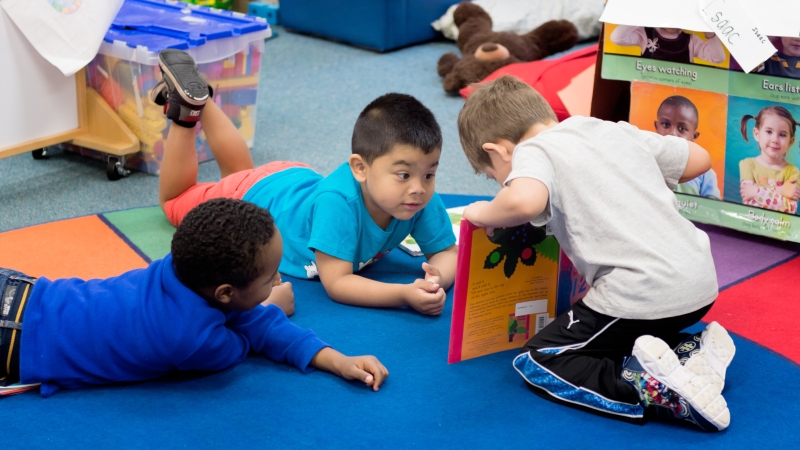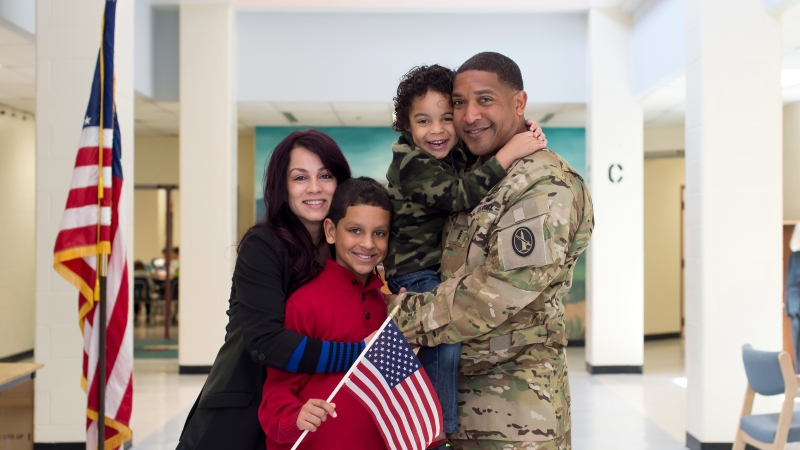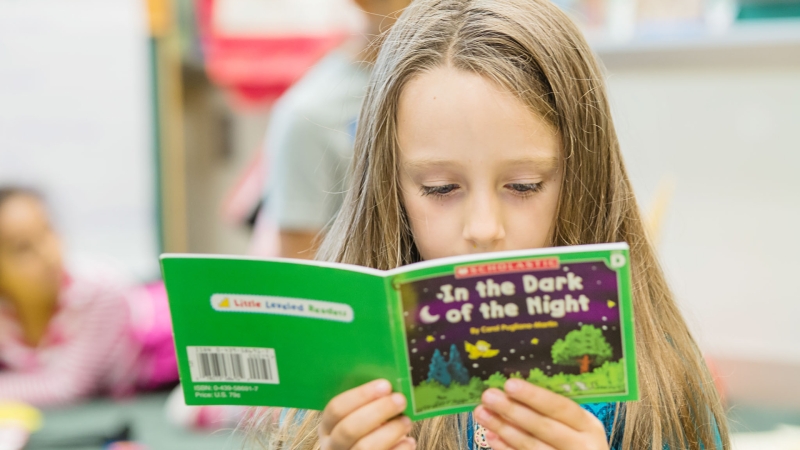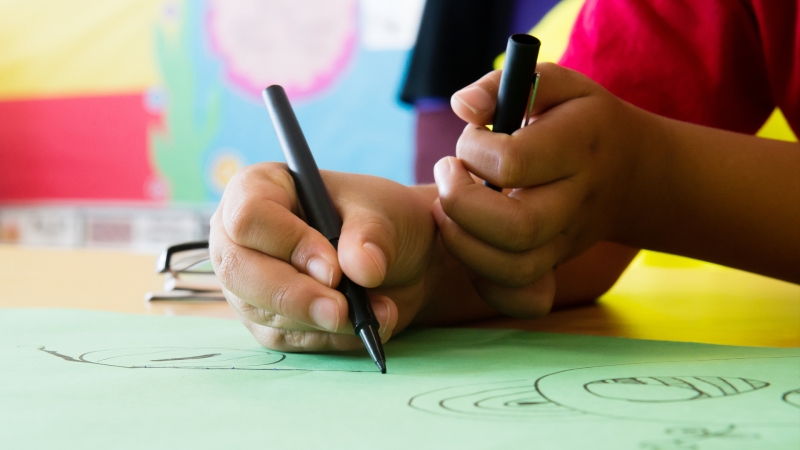
Critical and Creative Thinking Strategies (CCTs)
Critical and Creative Thinking Strategies grow students' problem-solving skills and thinking processes. Teachers embed CCTs in lessons across all subject areas and grade levels.
The advanced academic resource teacher and classroom teachers teach nine higher order thinking strategies across all subject areas and grade levels. The strategies are embedded in lessons that incorporate 21st Century thinking skills and extend and enrich the Program of Studies (POS) for all learners. Student responses to the lessons are also used to collect evidence of advanced academic potential in order to ensure equity and increase access to advanced academic programs.
In kindergarten through grade six, the critical and creative thinking lessons are designed to elicit a higher level thinking response. These lessons can also be used to identify and nurture gifted potential among young learners. The problem-solving skills, thinking processes, and student products that result from these lessons provide observable evidence of a student's ability to think and reason on advanced levels.
Each lesson is structured around a five-stage model which provides students opportunities to connect content to prior knowledge, engage in new ideas, use thinking skills to consider possibilities, reflect on new learning, and connect the lesson to future learning.
For example, one second grade lesson teaches the students the art of persuasion using a picture book titled, I Wanna Iguana by Karen Kaufman Orloff. In the book, a child and his mother write letters about their points of view regarding adopting a pet.
Critical and creative thinking lessons are designed to be integrated in each K-6 classroom throughout the year. The advanced academics resource teacher collaborates with the classroom teacher to model and coordinate several response lesson experiences throughout the year for all students.
Each of the lessons teaches a specific thinking strategy. The lessons may be used to develop creative and critical thinking skills in all learners. Each thinking strategy can be used at any grade level and in any curriculum area. Students are taught the name of the strategy, how it can help them become better thinkers, and are then given opportunities to practice using the thinking strategies in different content areas. Icons provide a visual representation that helps students identify and remember the thinking strategy.
The nine different strategies are
Questioning
Active learners are always questioning. Students who take responsibility for asking their own questions become more productive and engaged in their learning processes. Metacognition, or thinking about thinking, involves questioning our individual learning processes. Such questioning helps us solve problems by developing, implementing, and evaluating plans of action. Guiding the development of thinking skills in all students empowers them, increases their independence, and helps them develop to their maximum potential. Children always have a wealth of questions – encourage questioning in your child and work with them to find answers.
Fluency, Originality, Flexibility, and Elaboration
When students are able to come up with ideas (fluency), combine ideas in new ways or come up with unusual ideas (originality), then categorize and develop their ideas (flexibility and elaboration), they are more able to make inventive or creative connections between ideas.
Students should become comfortable with generating lots of ideas without pre-judgment. The process of suspending judgment is important to brainstorming and maintaining an open mind. Fluency and flexibility open up the thinking of students to consider many possibilities, and originality and elaboration stretch the uniqueness of their thinking.
This is a great strategy to use with your children to generate ideas for a family trip, a way to spend the weekend, the best pet for the family, creative solutions to problems that arise, and other situations that lend themselves to multiple ideas for consideration.
Visualization
This strategy opens up student thinking by using sensory information to stimulate imagination with both spoken and written words. The process of visualization can also help students plan out an experience before execution. Students can “see” roadblocks and problems before encountering them. This strategy helps with planning, goal-setting, and organization.
Research studies have shown that visualization greatly increases the level and depth of comprehension of both spoken and written words. Visualization can be a powerful strategy for helping your child set goals, picture the steps that need to be taken, consider alternatives, and visualize a plan to achieve their goals.
Mind Mapping
Mind mapping is a method of visual note-taking that helps students organize information in unique and personal ways. It is appropriate for all students because it helps them retain, remember, and recall information. It also helps students to see the whole picture at once and make connections among related ideas without interruption. As students begin to work with more information in the content areas, this is a key skill that is especially important for visual learners and students who enjoy making connections among ideas.
Mindmapping is a lot of fun – you and your child can write a word or draw a circle in the middle of a page. Next, draw lines and new circles to ideas and words or pictures that connect to the original word. For example, maybe your child is interested in space. Together you could create a mind map of all that you know about space and then add things that you want to investigate.
Point of View (POV)
This thinking strategy allows students to explore an idea from multiple perspectives. This helps to broaden students’ thinking and demonstrates that an idea should be examined from many points of view before an opinion is formed. The discipline of examining an issue from many perspectives will provide students with a good model for open-ended receptive thinking and empathizing with the opinions of others. Everyone has a viewpoint! It is important for children to become comfortable sharing their own viewpoints and listening to and learning from others.
Parents can help their children recognize different viewpoints through books and stories or conversations that encourage a discussion of questions that have no definite answers, e.g., what makes a good friend? Another example would be a discussion of a movie that you attend together that might lead to different viewpoints on the theme or message of the movie.
Analogies
Analogies allow students to make connections at a more sophisticated level. This structure for thinking helps students relate material to previously learned concepts as well as generate new comparisons. A facility for working with analogies gives students a structure for generating creative ideas, seeing complex relationships, and making unusual comparisons. Analogies are fun – how is thinking like a volcano? How is a dandelion like a good book? They stimulate the imagination and lead students to deeper understandings by connecting things that do not always appear connected.
Encapsulation
Encapsulation is the process of stating ideas in a concise, precise form. It is not a summary and does not involve simply stating the main idea or restating information or opinions. Encapsulation requires students to synthesize information and nuances in order to capture the essence of an idea, object, or activity, and then communicate their thoughts clearly. Vanity license plates are an example of encapsulating an idea with letters and symbols – try creating your own with your child!
Decisions and Outcomes
This strategy provides a framework in which students can assess and evaluate a variety of decisions and possible outcomes. Understanding cause-and-effect relationships helps students recognize the importance of examining the outcomes of multiple decision options before embarking on a course of action. The concept of examining outcomes is relevant for all students as they learn to consider both short-term and long-range consequences in the decision-making process.
For example, your child may want to make a purchase. This would be a great time to consider the short-term consequences (the purchase may use up all of their savings, they may have to forego other purchases for a while, etc.) and long-term consequences (it could be less expensive if they wait, a newer, improved model may come on the market, it may be impulse buying and later they may regret spending the money.) These are important considerations for children to think about that will carry on into adult life.
This strategy also works well for decisions about what sport to play, whether or not they do their homework, and many others as they realize that all decisions have outcomes that must be considered.
Plus, Minus, Interesting (PMI)
The PMI strategy encourages students to think about many possibilities and to explore the positive and negative aspects of ideas or activities. PMI encourages students to develop the habit of looking beyond the polarity of “yes or no,” “wrong or right,” and “my answer or your answer.” The goal of PMI is to develop independent thinkers who consider a range of ideas and/or possibilities and see beyond the obvious. The “interesting” category can also include questions.
This strategy works well when discussing books, events, family trips, musical instruments, or any other ideas that can be considered through the lens of pluses, minuses, and interesting aspects. For example, your child is trying to decide which musical instrument to play. Together you make a chart of the plus, minus, and interesting aspects of each instrument that they are considering. Often the interesting column leads to insights that will help them make a decision.
Critical and Creative Thinking lessons represent a broad range of thinking strategies that extend and enrich the Virginia Standards of Learning and the Fairfax County Public Schools’ Program of Studies objectives. Each lesson can be expanded to encompass more complex thinking skills for those students ready for more advanced levels. Classroom teachers can introduce these “Thinking Lessons” in any order as stand-alone activities, or they can integrate the strategies with content-area material.
All students can be taught to sharpen their critical and creative thinking skills and to become more independent and effective learners. Using Thinking Lessons is the first level of gifted service and is one important way that classroom teachers can recognize and develop advanced thinking in all learners.
For more information about the model lessons, contact the Advanced Academic resource teacher at your local elementary school.





